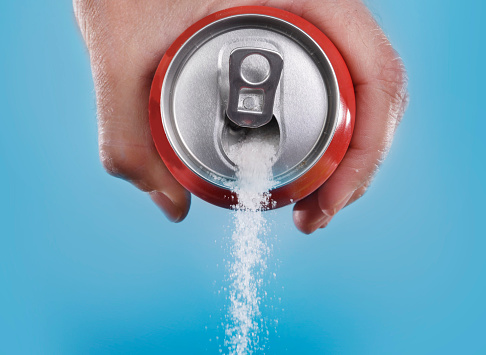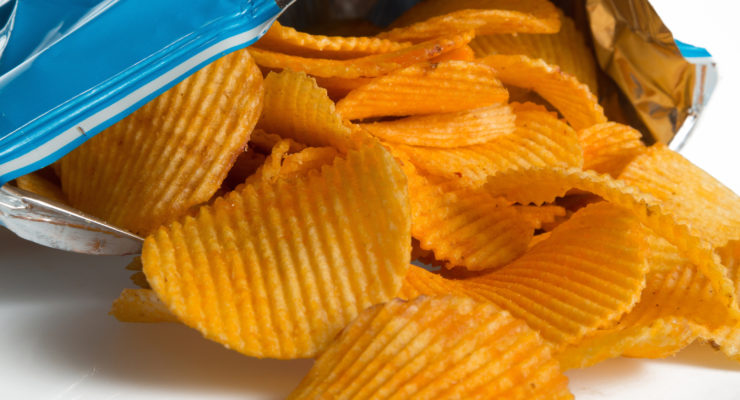https://i.imgur.com/Iv1VlrB.jpg
(my progress)
I’ve posted on r/progresspics a few weeks ago and there was a lot of positive feedback, so I decided today that I would try to detail how I made my transformation.
As a warning to those reading, this is my opinion via my own interpretation of various research and trained professional accounts. Before any weight loss or exercise routine, consult a physician to get a unique and body specific plan that will cater to your needs. Also, if any of this information is incorrect, don’t hesitate to reply with corrections so that we all can get the right information.
Some History (Contributing Factors to Weight Gain):
About a decade ago I was a typical Southern Californian. I was surfing, skating, just enjoying the sun and stroking my ego as often as I could. As a kid I had issues with pilonidal cyst disease, but thought nothing of it. Sometimes it would abcess and drain, but being me, I thought it’s supposed to do that. Around mid summer 2009, my cyst abscessed, but this time didn’t go away. I needed to see a doctor and she found that the cyst is much larger than we had believed. A pilonidal cystectomy was going to be needed. While under the knife, they found that the cyst had indeed grown about the size of a Nerf football and made canals from my tailbone down to about two inches from my rectum. Needless to say that was not fun, but I managed to get through it and I was doing well with recovery. Bacteria decided on a different plan. My surgical wound failed to heal fully and got infected. This happened an additional two times until finally getting referred to a plastic surgeon to do a z-plasty. By this time it was already 2013 and the stress of surgeries, recovery, and lack of activity contributed to me ballooning from 200lbs to 240lbs. By 2014, I had grown depressive about my weight and now lack of full mobility due to the surgical site having messed around with my lower back and glutes area. I couldn’t even tie my shoes. By 2016 I grew to 260lbs and just hated my weight. I was happy in general, but I didn’t enjoy myself and I missed all the activities I had performed.
2016:
Around 2016 I started with this crazy idea of playing hockey, as a goalie, thinking it wouldn’t be too crazy or difficult on the body. I was wrong, but this did reintroduce me to the passion of activity and fitness. I had managed to lose 20lbs through 2016 all from playing hockey and being more active, but at this time I had yet to develop any nutrition or workout plan until 2018.
2018:
At this point in time I felt much better, but I wanted to lose the rest of the weight. My goal was to get back to 200 again. This time I needed to really focus on what matters to weight loss, so I read up and researched what I could. Here is what I found.
Caloric Deficit:
The body functions on nutrients containing a wide assortment of compounds ranging from simple amino acids to complex structures like proteins and carbohydrates. These collections of nutrients create energy which we refer to as calories. Your daily caloric intake is simply referring to the daily energy you are eating. As you probably know, in order to lose weight you have to create a deficit or reduction in the daily caloric maintenance level. Simply put, you have to take in less than your body needs throughout the day.
Month 1
Step 1: Record/Track your Caloric Intake for your current nutrition
i.e. Daily Caloric Intake Averages to 3000 calories
Step 2: Reduce Intake by 250-500* calories
Start small at first so you can get into a habit of reduction, then increase caloric reduction as you see fit
(* 250-500cal restriction based on the 3500cal/1lb** standard, 250cal x 7days = 1750 or 0.5lbs, 500cal x 7days = 3500cal or 1lb)
i.e. 3000cal - 500cal = 2500cal (= -3500cal/1lb of Fat** weekly deficit)
(** 3500cal = 1lb is the 1958 model that considered composition of fatty tissue and the necessary energy required to burn it, it does not consider individual metabolic/thermogenic processes, therefore this is a base guideline and should be used to build off of)
[ https://academic.oup.com/ajcn/article-abstract/6/5/542/4729975?redirectedFrom=fulltext ]
Step 3: Continue this method for two weeks to a month to create habitual behavior of caloric reduction
My Mental State: For the first two weeks, it's was easy holding myself to the caloric restrictions. You remind yourself that headaches and cravings are just part of the program. By week 3, I was starting to crave other foods and my energy level started to feel like it was depleted. My mind was starting to tell me that this isn't fun, but I knew I had to push through. Week 4 was roughly the same, but getting better. Trust me I wanted to quit!
Month 2
Step 1: Use a Basal Metabolic Calculator (BMR)* and Total Daily Energy Expenditure Calculator (TDEE)** to determine your body caloric maintenance requirements and start to cut calories from the TDEE values. BMR is your baseline caloric need to literally sleep all day with no activity, so any nutrition plan you create must not dip below your BMR. TDEE is your BMR with an activity modifier to account for moderate to highly active lifestyles.
[* https://www.ncbi.nlm.nih.gov/pubmed/16277825 ]
[** https://www.ncbi.nlm.nih.gov/pmc/articles/PMC1784117/ ]
i.e. BMR = 2000cal TDEE = 2200cal to 2800cal dependent on activity, 2800cal - 500cal = 2300cal daily intake (= -3500cal weekly deficit)
Step 2: Replace foods with more nutritious/healthy alternatives and begin to eat for your TDEE caloric deficit requirements
i.e. Lean Meats (Fish and Chicken) and Vegetables, all the veggies!
Step 3: Track Macronutrients
Protein, Fat, Carbohydrates
My Mental State: Around this time the body started to feel better and more receptive to lower caloric intake. I believe that the brain was trying to return to it's previous homeostatic range the previous month, but gave in to the new regiment I was putting myself into. I also feel like an increase in healthier foods helped take some of the lethargy and bloating I always had prior to weight loss.
Month 3
Step 1: Recalculate BMR and TDEE to account for new body weight
i.e. BMR = 1900cal TDEE = 2100cal to 2700cal dependent on activity, 2700cal - 500cal = 2200cal daily intake (= -3500cal weekly deficit)
Step 2: Start considering a food regiment if you have trouble trying to maintain macronutrient tracking
i.e. Carb Cycling, Keto, etc (Personally I did Carb Cycling)
Step 3: Start considering an increase in protein intake and reduction in fat/carbohydrates since protein might have a higher thermogenic effect (increased Lipolysis or fatty acid breakdown)*
[* https://www.ncbi.nlm.nih.gov/pubmed/15466943 ]
My Mental State: By month 3 I was really starting to feel energy and feel comfortable eating smaller more macro/micronutrient rich meals. The increase in protein did have the side effect of not using the restroom as often. So I was a bit scared about that. About this time is when most people turn for the long term, as I had experienced when I stopped smoking. Now what was hyper focused attention to nutrition, is now more comfortable and almost habitual. I also learned how to throw in cheat days to keep me happy and feeling like I can still enjoy some crappy food on occasion.
Month 4-12
Continue to recalculate your BMR and TDEE until you’ve reached your desired weight goals. The reason you have to keep readjusting your caloric intake is because the body will adjust to the caloric restriction in order to get back to homeostasis. If you do not change your caloric deficit as you lose weight, the weight loss will become less and less and eventually stagnate. Continue to track macronutrients and even consider micronutrient tracking. By the 4th month, your eating program should be habitual and easy to continue and follow. Remember its ok to have cheat days as long as you maintain weekly caloric deficit.
Why I chose Carb Cycling for a Meal Plan:
Carb Cycling refers to the reduction of carbohydrates on either a fixed schedule (i.e. Monday-Thursday = low carb intake, Friday-Sunday = regular carb intake) or activity specific (i.e. Lift Day = high/regular carb intake, Rest Day = low carb intake). For me, the cycling is less of a benefit by targeting carbohydrate intake to match with activity levels and more of a mental reminder for maintaining proper nutrition. By adhering to fixed schedule carb cycling, I maintained high protein caloric intake on Low Carb days and then regular protein intake for those days I increased carbohydrate intake. My schedule was:
Monday - 100g Carbohydrates (400cal)
Tuesday - 100g Carbohydrates (400cal)
Wednesday - 200g Carbohydrates (800cal)
Thursday - 100g (400cal)
Friday - 100g (400cal)
Saturday - 250g (1000cal) [Glycogen Refill]
Sunday - 250g (1000cal) [Post Hockey]
Activity/Exercise:
In order to better assist with Caloric Deficit, it is recommended to increase activity levels to help burn the necessary calories to create that deficit. If you are excessively overweight or have had inactivity for a few years, allow more time to adjust to exercise and increased activity. Your body's bones, joints, and ligaments have adjusted for the lack of activity or specific exercise usage and therefore are at more risk for injury.
Month 1 (2-3 days per week)
Walk or Swim: Swimming is the better of the two if you have been inactive for a prolonged period of time. Walking is the least impactful for cardiovascular exercise if swimming is not possible.
Weight Training: Weight Training may not have the same caloric “burn” as cardio*, but it has the beneficial effect of increasing muscle mass and strengthening joints and ligaments**. Start with very basic sitting compounds like inclined bench, shoulder press, lat pulls, etc at 50% maximum. Too low of a weight won’t create enough resistance to create muscle recruitment, too high and you risk injury or prolonged fatigue of muscle and more time away from activity. These exercises will activate a wide group of muscles that will contribute to greater muscle recruitment and joint functionality.
[* https://www.ncbi.nlm.nih.gov/pmc/articles/PMC3544497 ]
[** https://journals.lww.com/acsm-csmr/fulltext/2012/07000/Resistance_Training_is_Medicine___Effects_of.13.aspx ]
My Mental State: Even though I had been playing hockey for a bit, I never knew how much I sucked at the gym. Like I felt totally worthless there. Hardest part was feeling comfortable wearing t-shirts without jackets to exercise. Word of advice, get CVC or Polyester Cotton blended t-shirts. They don't shrink as easily and do a better job lying on the skin and fat.
Month 2 (3 days per week)
Increase Walking or Swimming Distance: By about a month there will be some slight changes in your body so continue to push a little further and increase your distance goals little by little.
Increase Rep/Weight for Weight Training: The same can be said for weight training, there will be a slight increase in muscle development so increasing the weight from 2lbs to 10lbs and adding a few more repetitions or sets to those compounds will help.
My Mental State: I hadn't really known what Delayed Onset Muscle Soreness (DOMS) was really like until I started really pushing for more. I woke up some days feeling like I'll never lift again. My body couldn't move and felt like it hurt just to breathe. This is usually the big killer for most new gym goers. I knew I had to tough it out.
Month 3 (3-4 days per week)
Hiking and Elliptical Machines: By month 3 your body will start to strengthen the joints and ligaments. Now is the time to start using slightly more resistant cardio exercises with hiking being a cautionary activity if the hike has large increases of elevation (increased joint fatigue) and or excessive body weight is still a factor.
Begin to follow or develop a Weight Training Regiment: Now that you have comfort of using weights, by month 3 it will be time to start following a regiment. Personally I’ve used the Low-High-Low pyramid with weekly or bi-monthly 1-rep max days. The Low-High-Low pyramid is Low Weight/High Rep (1min of muscle activation with short rest) with gradual steps to High Weight/Low Reps (increases hypertrophy)* then “drop sets” of Low Weight/High Rep to get back down the pyramid.
[* https://www.ncbi.nlm.nih.gov/pmc/articles/PMC4562558/]
My Mental State: At this point, much like my nutrition, the body adjusted and I began to get that lifters high. I started enjoying really hitting the gym as often as possible and really pushing harder and harder by the end of month 3. Once you hit this stage, you'll understand why so many people that go to the gym so often, do it. Nothing quite feels like beating your body up and getting that adrenaline pumping, then getting that "relaxed" release 15 minutes later in the sauna or car.
Month 4-12 (3-5 days per week)
Focus on following your exercise routine and try to increase cardiovascular distance and time intermixed with weight training. By about this time, running or jogging might be an optional cardio exercise, but these exercises have the highest impact on the joints and ligaments. The key is to find the right balance for you and what your goals will be. I’ve submitted to overall fitness (balance of cardio/weight training) with an emphasis in exercises that will increase my playing ability in hockey.
Time and Patience:
This will be the hardest part of any weight loss program. It takes a lot of time and a lot of mental fortitude to keep pushing forward. Most would suggest having a friend to do this with, and that is great advice, but in order for YOU to really lose the weight and be fit you have to have your own drive. Find your own goal and your own focus. Whether with a friend or alone, you should eat healthy for yourself and exercise for yourself. I’m not against working with a group at all, and for some that is necessary. For most of you, don’t rely on others to drag you to the gym or focus on your nutrition.
So this has been my continuing journey. Remember that this isn’t like a finish line where once you cross it’s all over. This will happen for the rest of your life. Health is a continuous process and that requires changing your habits and changing how you live to better yourself. Never give up and find help when you need it.







